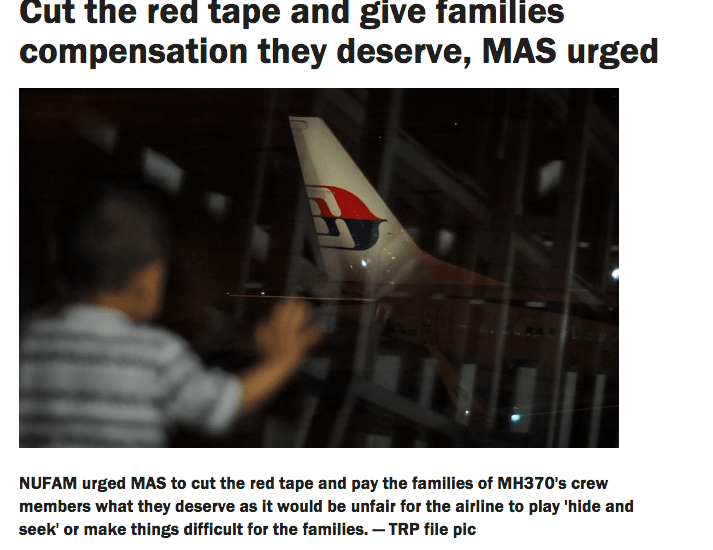Payments to families, what are the challenges and who does what?

My recent post on the potential disparity of payments to families from recent incidents has generated several questions about how payments are made and could the Special Assistance Team (SAT) members be the ones to start the discussion. Questions about payments to crew families have also been raised.
From field experience, this is a prime example of the coordination required for an accident response. Special Assistance Team members are a great asset. They work well as the human face of the airline helping families navigate the all the various processes.
However, because there are so many processes (return of loved ones, long term medical support for survivors, return of personal effects, travel, and memorials) all with multiple outcomes, it works well when the SAT act as the conduit, sitting with the families and helping the families understand the options and getting information.
Consider the various roles in the scenario for initial payments.
- The airline in conjunction with their insurer and the insurers solicitor makes a decision to offer an initial payment. Ideally, this would have been part of the planning process before an incident ever occurs. They then have to decide does it go to all passengers regardless of ticket type and status? Ticket type might mean a passenger traveling on an international ticket which ends with a domestic route, or who purchased their ticket in a different country. Status might be revenue or non-revenue passenger, a working crew member or an off duty crew member catching a ride.
Our recommendation is that an initial payment, while certainly part of any final compensation is offered for all people directly affected (so everyone onboard the aircraft and those who may been struck on the ground.)
- The airline has to identify who the legal next of kin are. Many people who come to the family assistance center are, while directly and emotionally impacted by the tragedy, are not entitled to or need insurance payments. The purpose of the funding is providing assistance to those “dependents” that suffer an economical hardship because of the loss.
Having worked with many air carriers, late at night going over manifests and databases, this is a very complex and difficult process. It is why a good data management system with a good family assistance program is so important. One of many challenges is that definition of legal next of kin / dependents will vary from jurisdiction to jurisdiction, and may be influenced not only by the location of the accident, but the nationally of the person. In one large accident, initial payments were actually made to group of elders, as per the local custom.
- Once the airline has identified the legal next of kin, then a letter should be prepared and personally addressed to each of the legal next of kin / dependent and delivered to them. As part of this process SAT members should be briefed so they are aware it is coming, what questions might be asked and how to answer those questions if they can.
These letters should go to all legal next of kin / dependents, regardless of location at the same time and within 7 to 14 days.
Some key points to consider
- This is one of the first actions the airline is directly in control of. It is both a humanitarian assistance issue and a legal / insurance issue.
- This is one of the first processes that further refine support and care. From the initial very broad humanitarian assistance program provided to multiple people to specific support for specific individuals.
- Our recommendation is that for this initial payment that the definition of those entitled to receive initial payments be flexible and broad. That is for several reasons. (1) There is often the very real need for people who have had to take vacation or sick days, time without pay to travel to a family assistance center and there will be many days out of work for this. With regard to income many people today live month to month. (2) The process of non-airline related insurance could take some time to resolve, especially in cases of foreign deaths, or with delay or non-recovery of loved ones and getting death certificates. (3) The family dynamics we have in our complicated lives don’t go away in death. There may be multiple dependents who are unaware of each other, or who contest the legal relationship of the other party.
- For the most part once you have the data picture you can identify the correct people and make a fairly accurate plan, and yes sometimes you will pay some people who are “legally not entitled”. But that is the cost of airplane accidents. That number will be quite small compared to the added cost for not taking care of those who are legally entitled. It is also a battle, that should not be fought and one you will lose in the public eye.
Here is where the legal, insurance, human resources and family assistance teams help smooth the transition for the different groups of people that are involved. To understand that there can be a difference between people who are crew, and those who are not; those are working the flight and those just catch a ride; and of course the a passengers who have multiple ticket purchase scenarios. But it is beginning of that process and one that should be a transitional process. That is after all what the process is about – transitioning people and the company from what was their normal to what will be their new normal. Start with the group, equal care and treatment. Over time progress to specifics based on the individual circumstances.

Nicola McGarry
Hi there
I just wanted to let you know that I found your article very interesting and beneficial.
Thank you,
Nicola
Ahmed Naas
Thank you for the useful information but, I have an inquiry to make .
Are we talking about the SDR payments ? if so, as far as I know there is a minimum amount of 16000 SDR to be payed within 15 days after the identification of the person entitled to compensation.